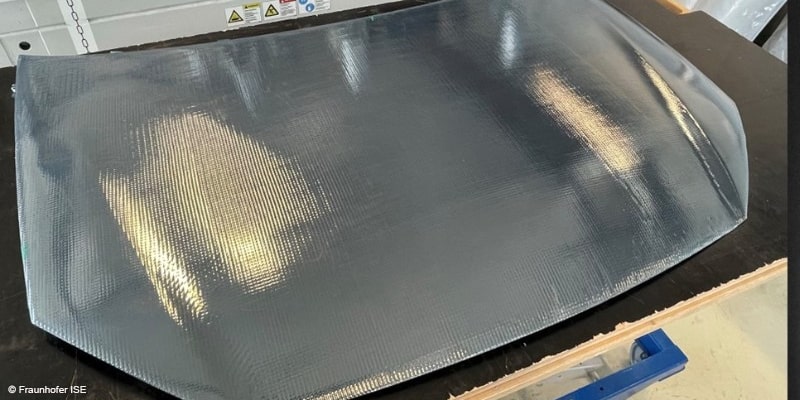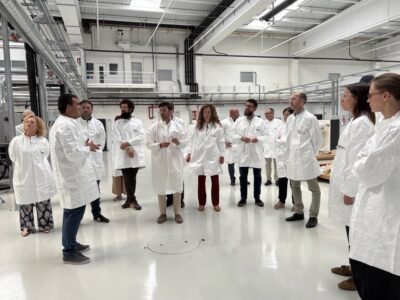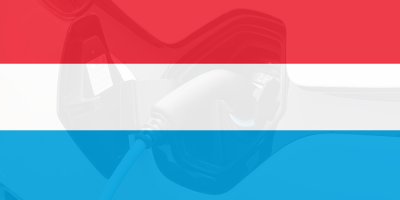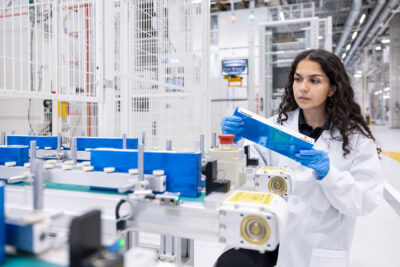Fraunhofer ISE integrates solar cells into car hood
While the vehicle roof is the easiest surface to use for generating solar power on board cars, researchers at Fraunhofer ISE went one step further. As part of two publicly funded research projects, they integrated solar cells into the standard sheet metal bonnet of a car.
The photovolatic bonnet, which will soon be on display at the IAA Mobility, has a rated output of 115 watts, features 120 PERC shingle solar cells and is grey in colour. “The technology could also be applied to the metal roofs of vehicles, which would have the advantage of being much lighter than photovoltaic roofs made of glass,” explained Dr Harry Wirth, Head of Power Solutions at Fraunhofer ISE. In combination with the research institute’s ‘MorphoColor’ technology, the solar-active surface can even be adapted to the colour of the car.
“We applied the solar cells to the hood panel of a car model that is frequently sold in Germany, interconnected them and laminated them with film,” added Dr Martin Heinrich, coordinator for PV mobility at Fraunhofer ISE. “To achieve this, the lamination process was optimized carefully to minimize air pockets, avoid wrinkling of the film module, which can occur due to the curved surface area, and to maintain the overall integrity of the hood structure.”
The Fraunhofer ISE institute had experimented with a similar premise in October 2021, fitting an 18-tonne electric truck with photovoltaic panels, which had the target of supplying five to ten per cent of the truck’s energy needs. The project was kicked off a year earlier, in April 2020. The technology basis for the project had been developed even earlier, however, as the Fraunhofer ISE had announced in 2019. At the time, a consumption of the electric car of 17 kWh per 100 km and an annual mileage of 15,000 km was mentioned under the conditions in the German city of Freiburg.





0 Comments